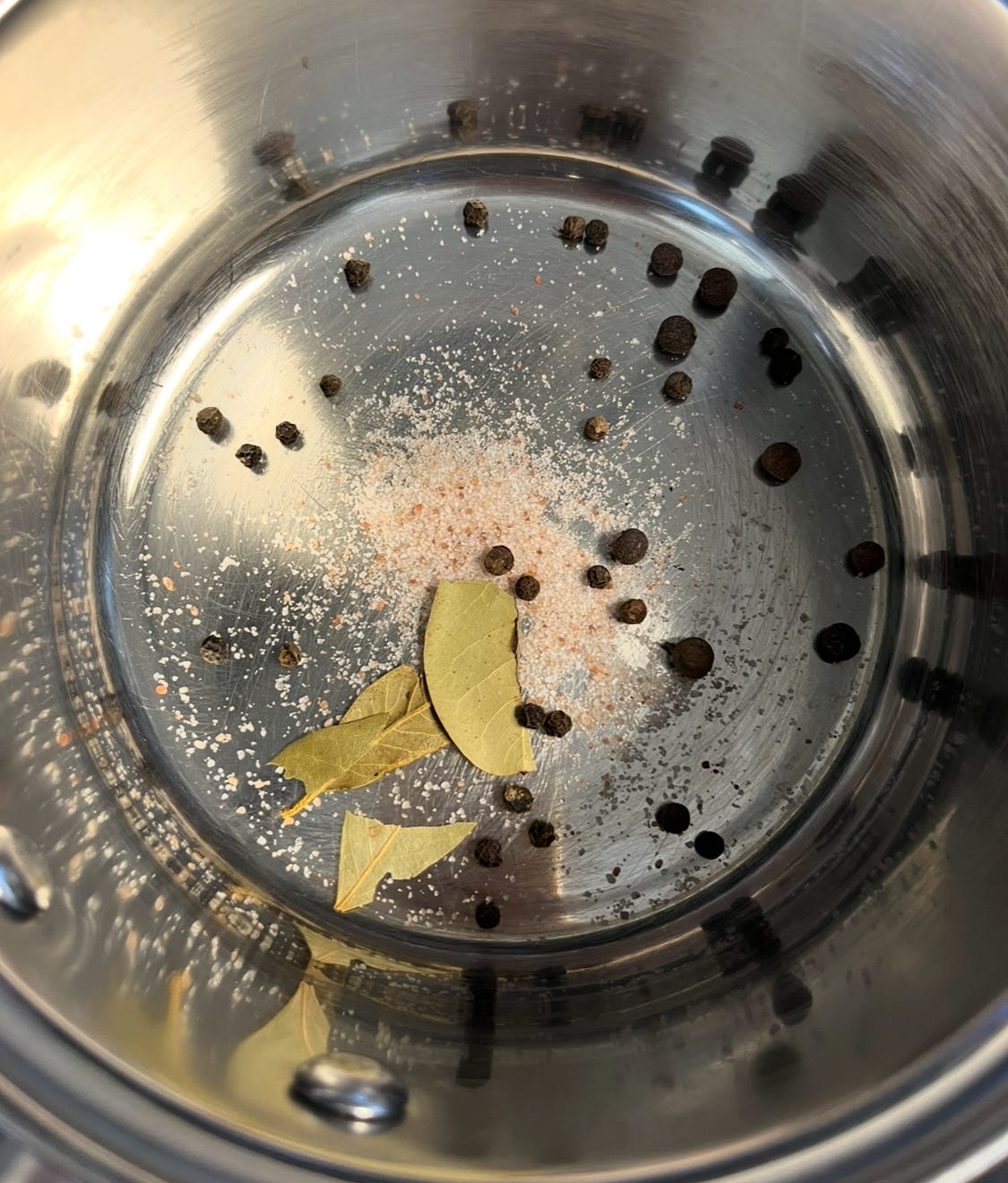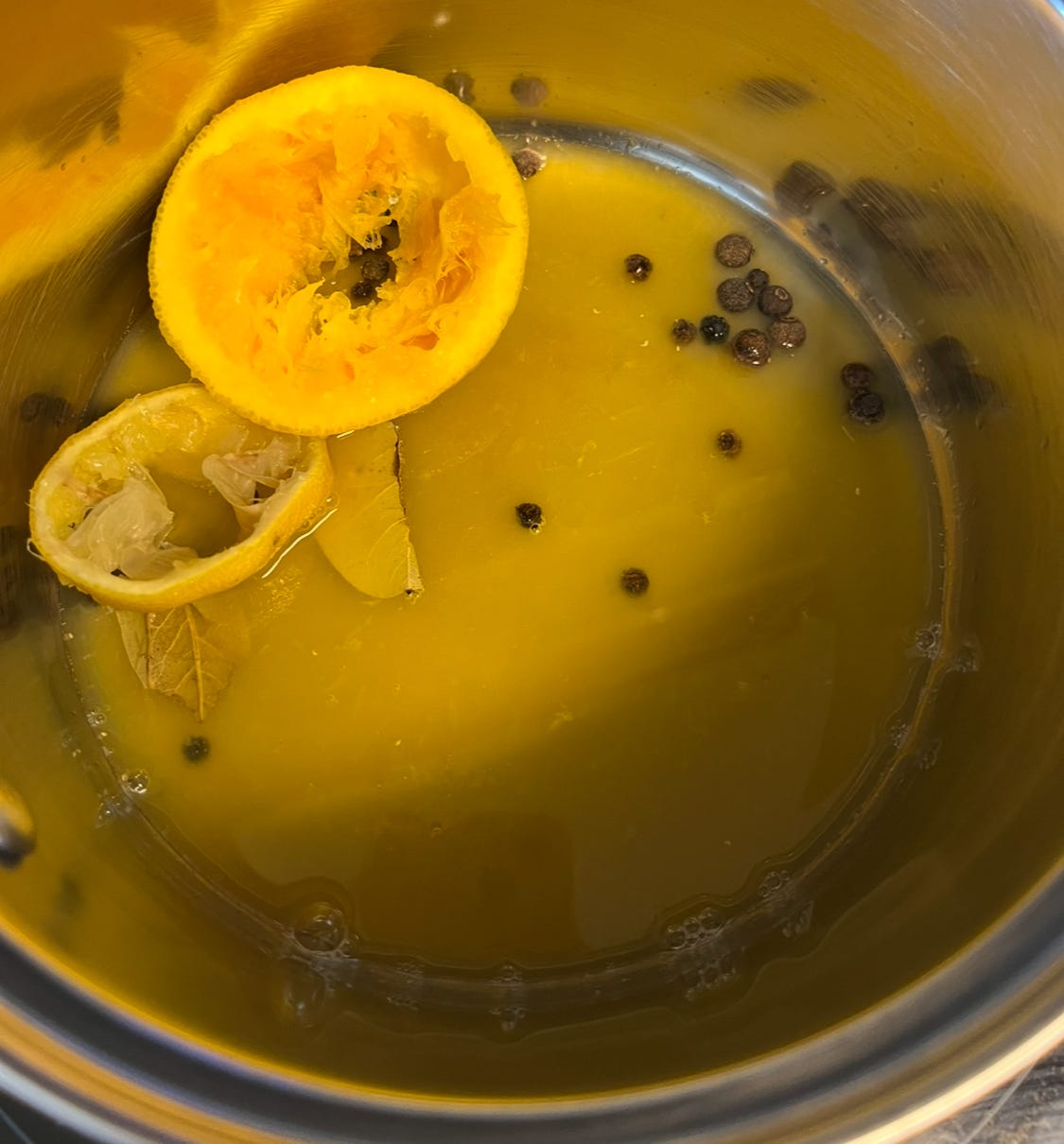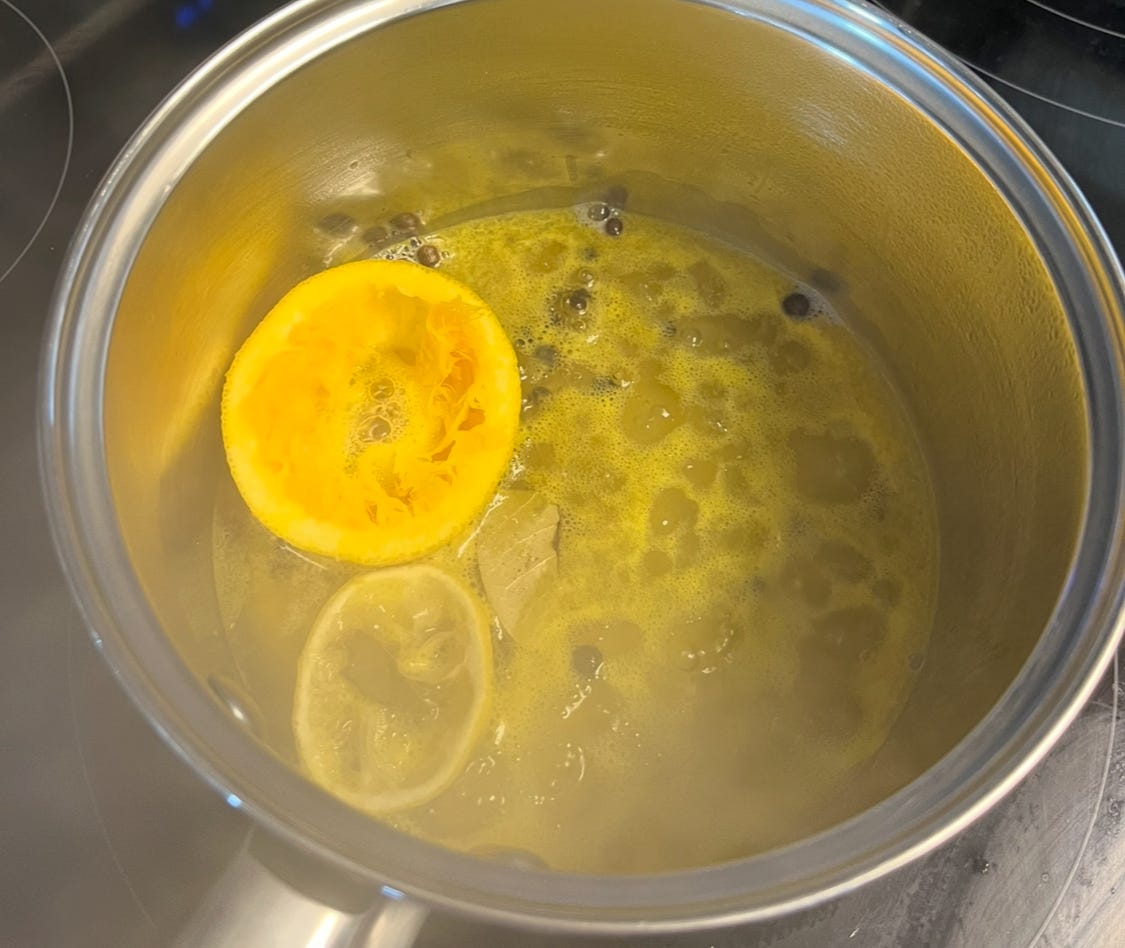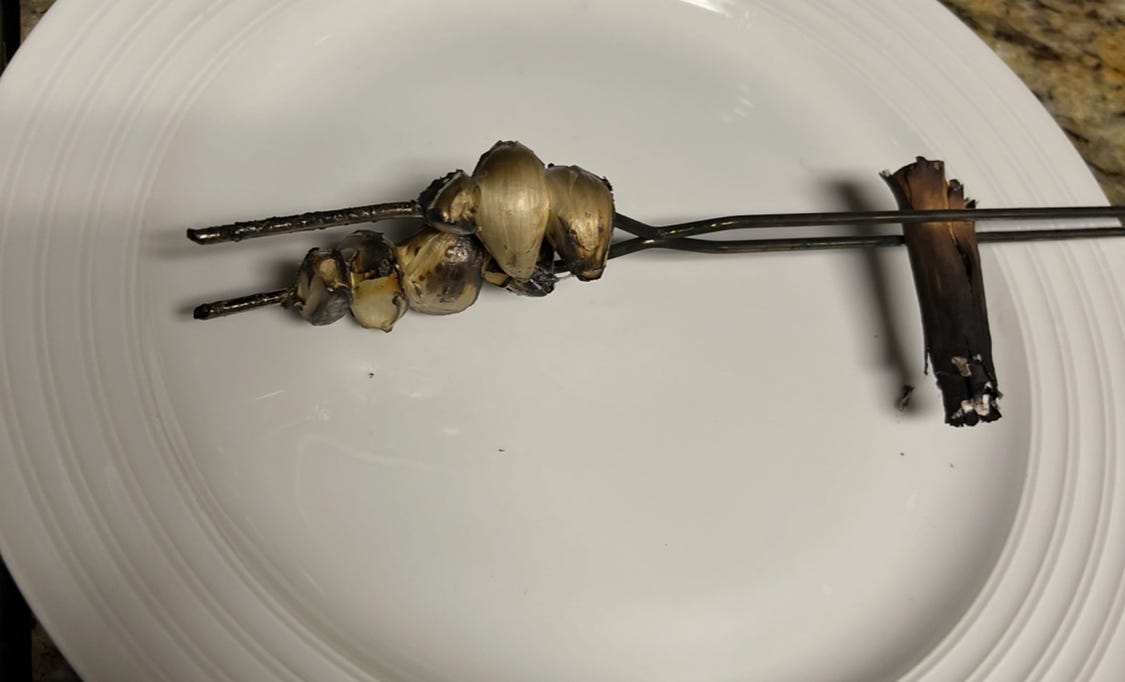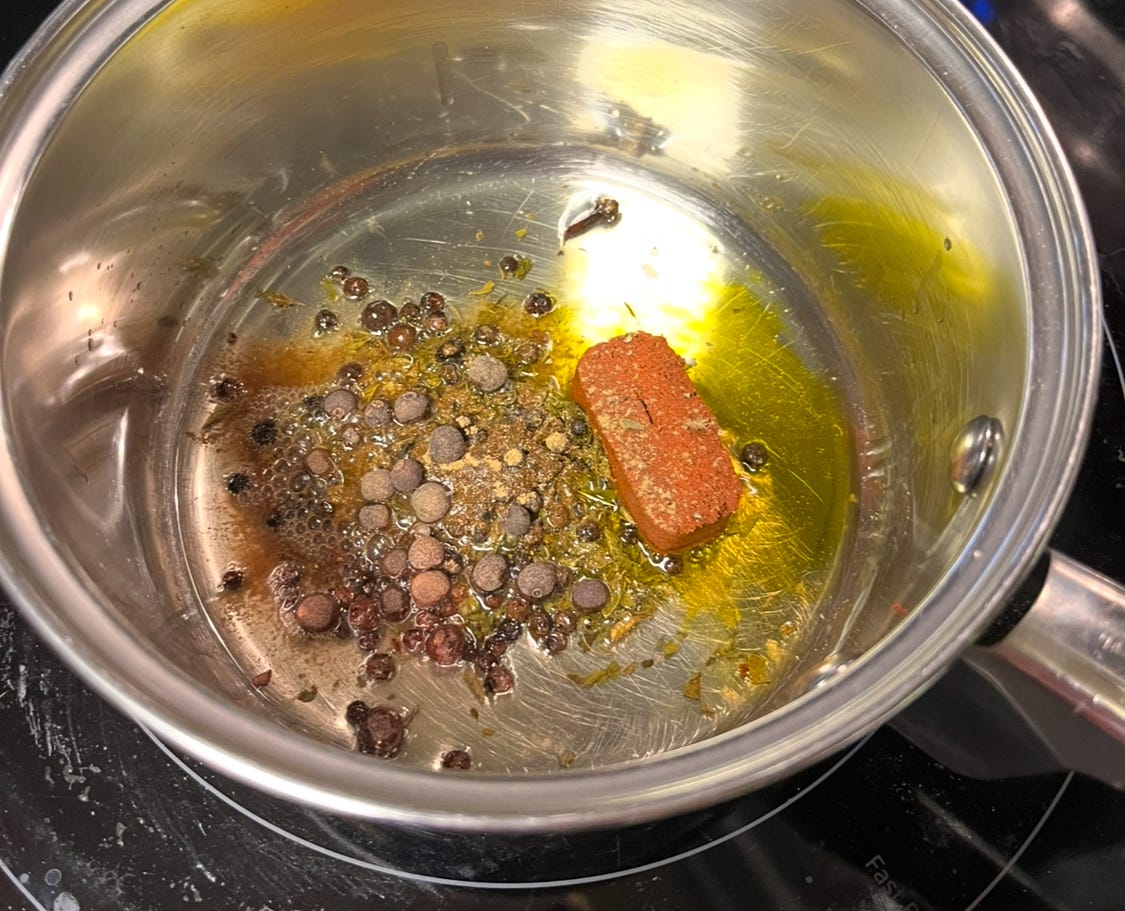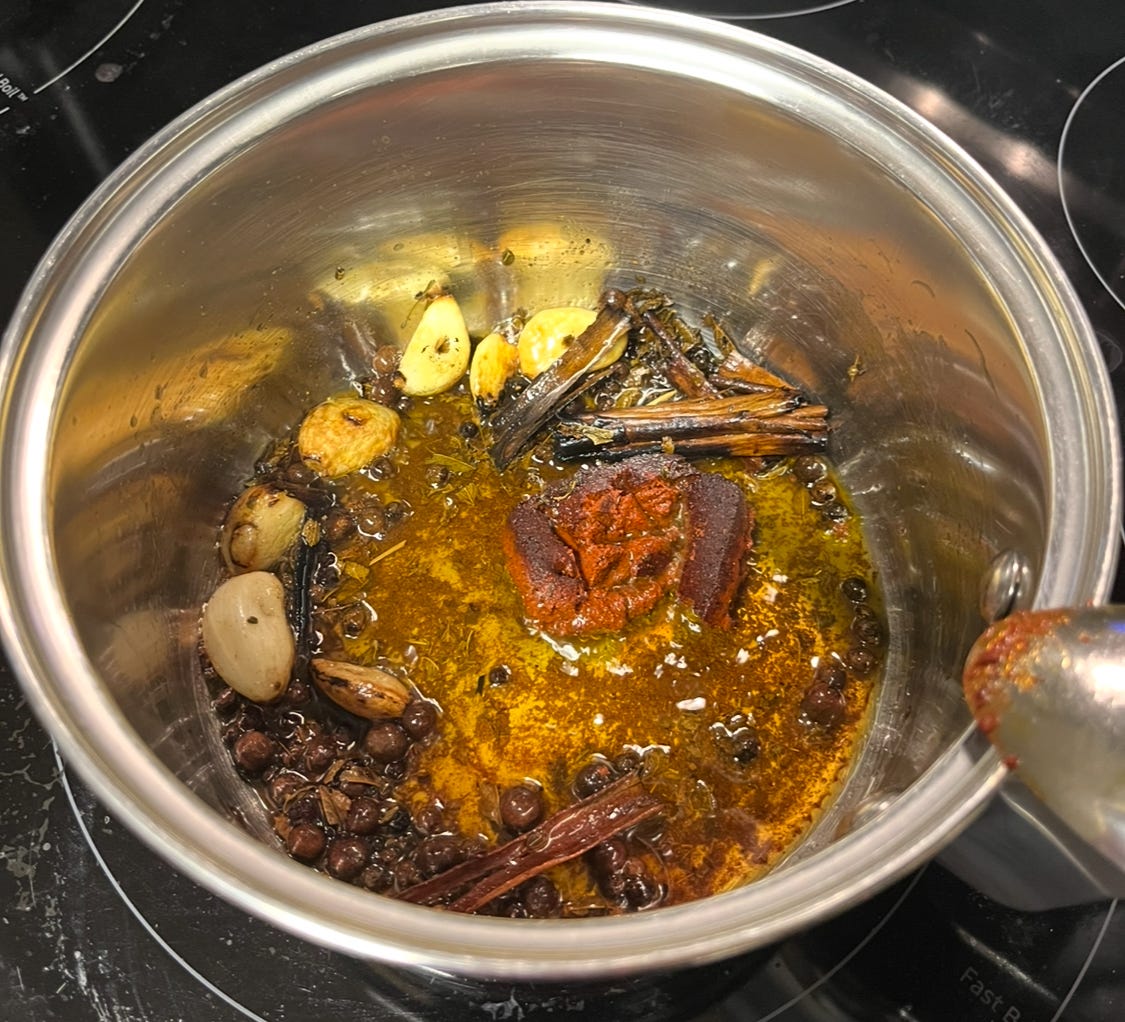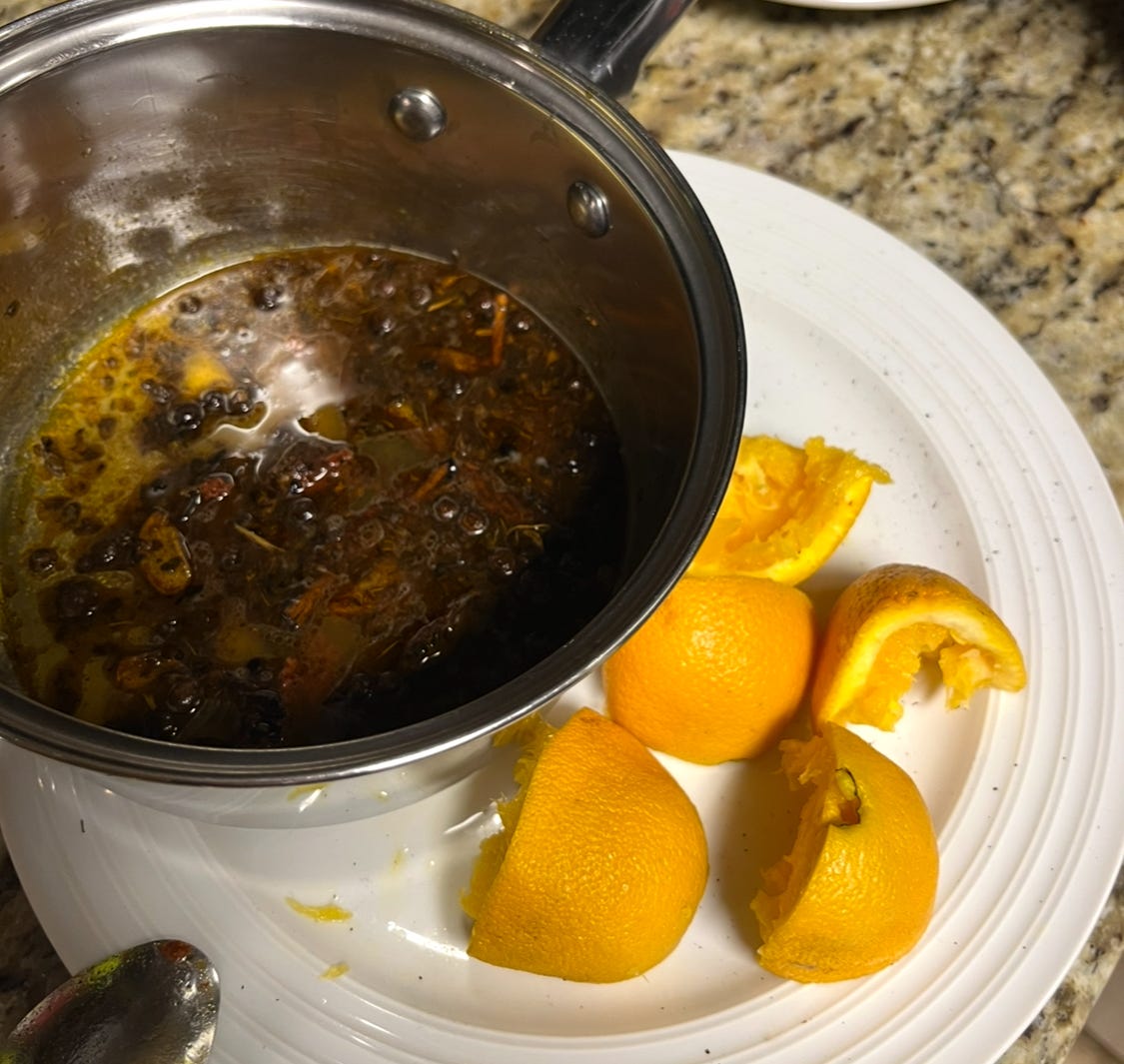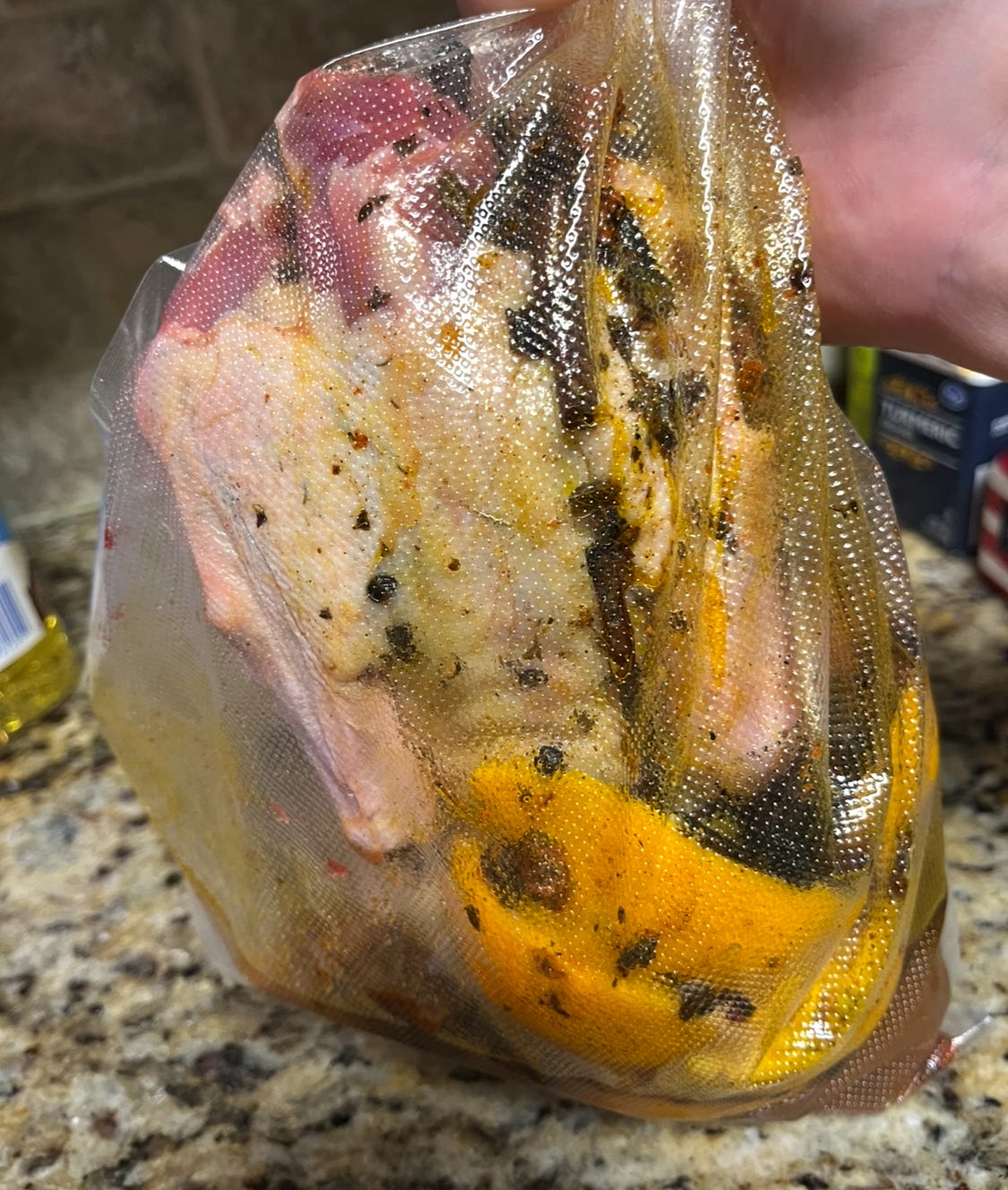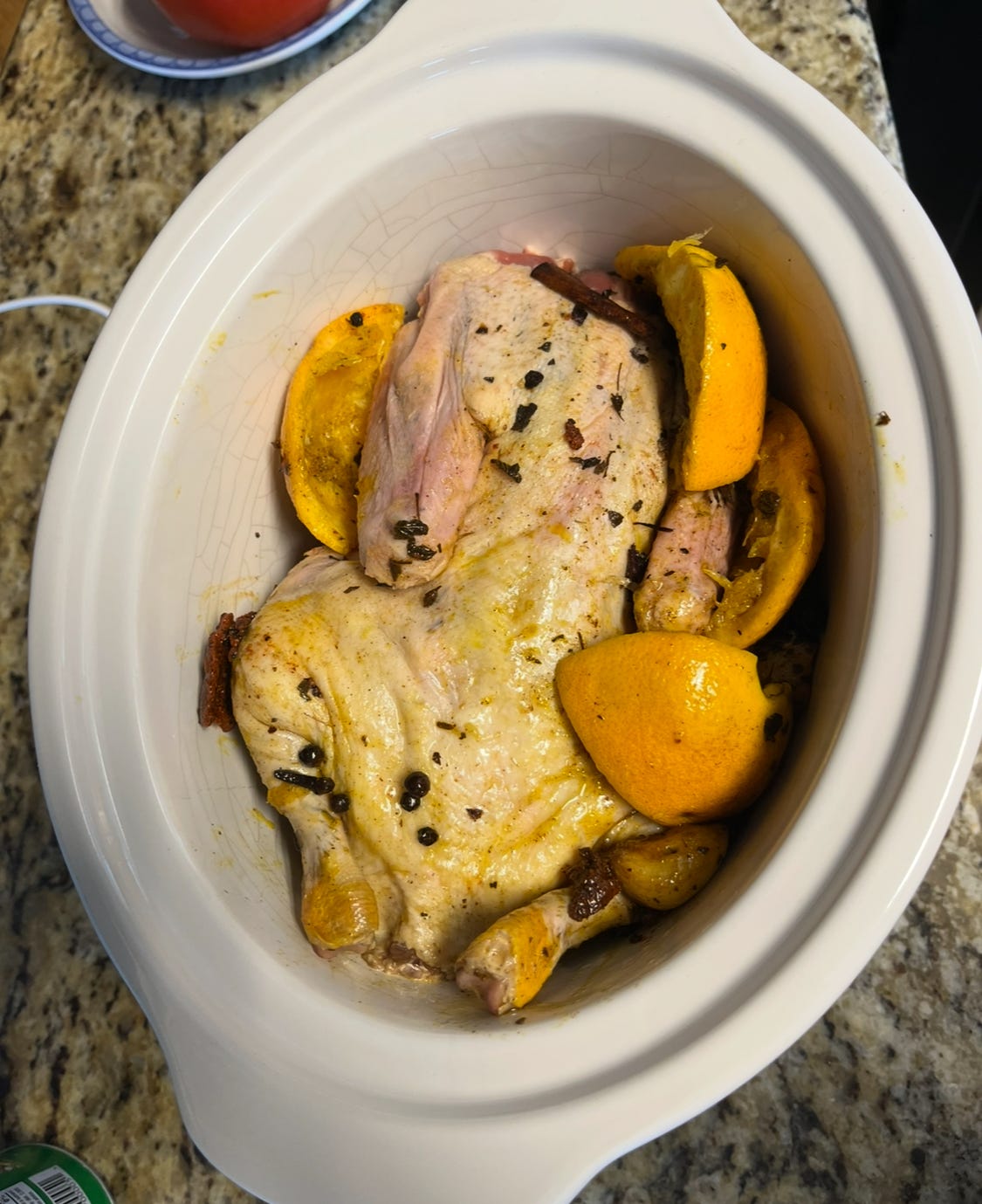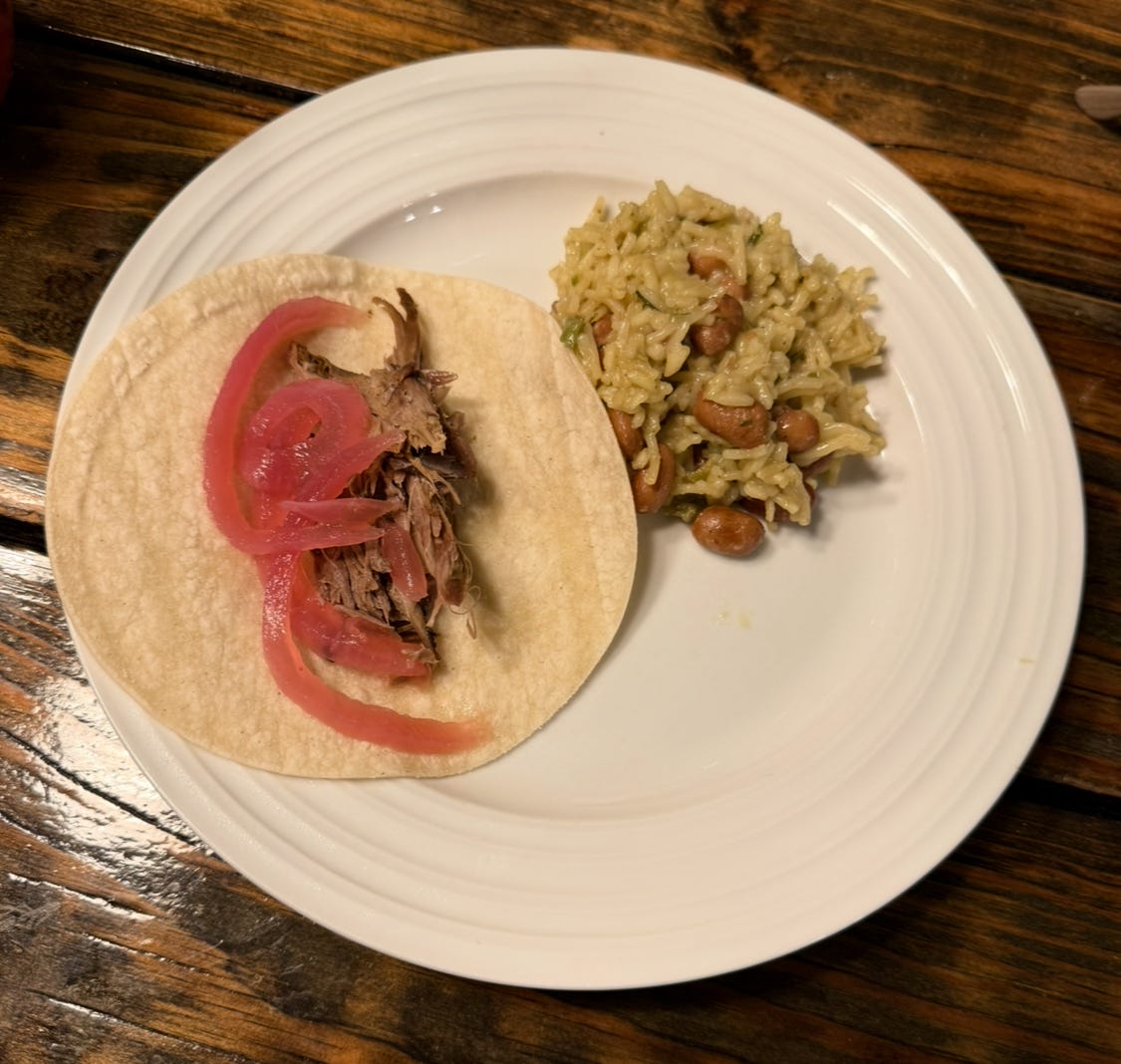Pato Pibil
Duck Pibil adapted from the Yucatec recipe for pork
This recipe takes a bit of prep, but is worth it! A week before cooking and serving this dish, you will need to pickle onions, buy mexican spices and rest your duck in the fridge to promote tenderness*.
Spice shopping list (buy at a Latin market or online):
Whole black peppercorns
Whole allspice berries
Whole bay leaves (laurel)
Achiote / Annatto (easiest to find and store as a paste)
Mexican oregano (has a different taste than the oregano used in Italian recipes)
Whole cloves
Cinnamon sticks
Cumin
For the pickled onions (in addition to the above spices that we’ll use in the recipe instructions below):
Red onions, peeled and sliced thin
White vinegar
Several large oranges (for juice)
One average size lemon
Optional: a spicy pepper (chile) - serrano pepper works best here for consistent heat, sliced thin. For moderate heat, add the pepper before heating the brine. For more heat, add the pepper slices raw to the jar when adding the cooled onions and brine.
Pickled red onions (this is a crucial garnish for the meat since the flavors both contrast and complement each other): [Make a week before so the onions have full flavor at serving time]
In a saucepan with room for the onions, add a tablespoon of pink salt, 2-3 bay leaves, a dozen peppercorns and six allspice berries.
Wash the citrus fruits very well with soap and rinse well. Juice them carefully, straining out the pulp and definitely all seeds - they are bitter. Reserve a large piece of peel from an orange and the lemon - no stems or seeds - for flavoring the onion brine. Add the peels and strained juice to the pot with 1/2 cup white vinegar.
Bring that to a bare boil, stir occasionally to mix in the salt and spices (not a rolling boil, you want to flavor the brine but not overheat it or have it evaporate). Flip the peels over and use them to stir the brine gently to take advantage of the oils and flavor from the peels. Remove the peels and squeeze them against the side of the pot before adding the onions.
After adding the onions, mix well and allow it to come to a bare boil again for a few minutes, then remove the pot from heat. The goal is to soften the onions and flavor them without overcooking them where they’re mushy. Move the pot to a back spot on your stove and allow to cool down completely.

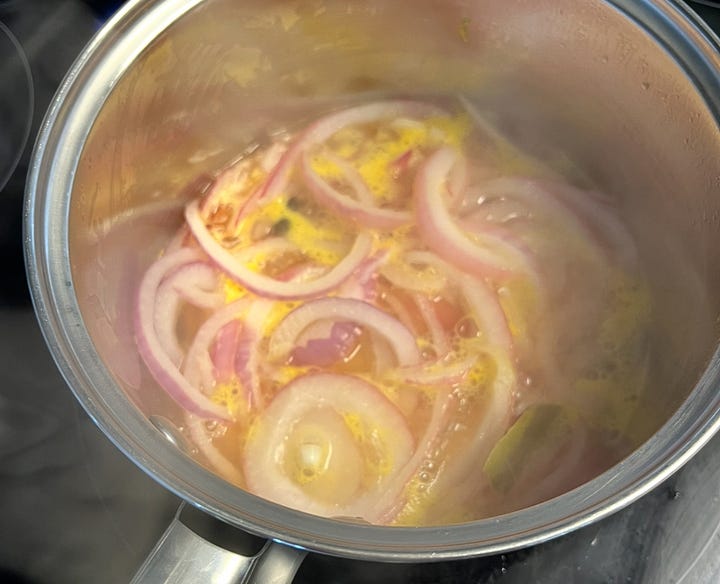
Once cooled, spoon the onions into a glass jar. Pick out any large pieces of bay leaves, but leave the peppercorns and berries in the brine. Pour the brine over the onions and push them down into the brine if it doesn’t cover them. Refrigerate until ready to serve.
For the pibil marinade and sauce:
Separate a head of garlic into cloves, remove loose papers but do not peel them. Place them onto a metal skewer and char them (preferably over a wood-burning fire, but if you don’t have that available a blowtorch, gas burner or hot skillet without oil works). After charring, peel the garlic as much as possible and leave any blackened areas. Also char the ends of a small cinnamon stick and knock off any loose ashes. The smoky flavor from the char will add some depth to the pibil sauce without overwhelming it.
Add several tablespoons of oil (canola or vegetable oil that can handle high temps, no olive oil) to a saucepan or frying pan and allow to heat up while you add the spices: 1/4 cup annatto paste, 2 tablespoons Mexican oregano, 3 whole cloves, 2 tablespoons peppercorns, cumin (to your level of enjoyment of this spice, some people find it overwhelming) and ~10 allspice berries. Allow the spices to simmer on a low sauté setting, never deep frying or burning.
Add the charred garlic and cinnamon and stir occasionally, breaking up the annatto paste but it doesn’t have to be fully mixed:
While this is happening, juice several well-washed and rinsed oranges. You want to keep several of the squeezed peels for the marinade and cooking, but none with stems or spots and no seeds or excessive pulp. When the spices are fragrant, remove from heat and allow to cool if it got too hot during the sauté. Add and mix in the orange juice, 1/4 cup white vinegar and several healthy pinches of a salty salt (sea salt or pink salt work well here).
Marinate your duck with the spices and peels at least overnight. I use the same bag the duck is stored in, pour the spices on and through the duck, add orange peels, remove as much air as possible from the bag, seal it and store upright overnight. You want the spices and peels to be in contact with the duck to absorb as much flavor as possible.
After an overnight marinade, prepare the smallest crockpot that will fit the duck with a healthy dose of oil in the bottom (olive oil is fine here, especially if you have a seasoned one that fits the flavor profile: garlic, chile, citrus). Place several pinches of salt, the duck, spices and peels inside the crockpot with the peels on top if possible. Cook, covered on High for at least six hours, removing the orange peels and discarding after two hours.
After cooking, remove bones and skin from the duck and discard. Serve the shredded meat on warm corn tortillas and the pickled onions as garnish:
¡Buen provecho!
Footnotes & resources:
*A resting period in the fridge is beneficial to the point of necessity for any farm fresh poultry. If you pick up a slab of chicken at the grocery store, it has a “use by” date, but that doesn’t tell you when this animal was butchered, how long it spent sitting on a truck or even on the supermarket shelf. It also won’t mention the lack of care and cleanliness that went into butchering this animal effectively and in a sanitary matter, which it’s then washed in and injected with chemicals to account for this. A pasture-raised animal has been allowed to move around vs extreme cage confinement and has eaten a variety of more natural things vs being only offered a high-corn or -grain feed designed to fatten quickly and give the meat a mild taste. Allowing a bird to rest in the fridge for several days and cooking it whole in a crockpot yields a very tender and flavorful meal. You will usually get a more even ratio of dark and white meat depending on the breed of the bird and way more depth of flavor. These aren’t wild-bred birds, so “gamey” is not how I would describe it, but if you’re only used to eating meat that comes on styrofoam plates, it may be very complex flavors at first. Larger pasture raised birds (turkeys, geese) will have more leg muscling from walking around for dark meat fans and stronger attachments (ligaments, tendons). The skin of pasture-raised birds is also an important part of the cooking process, especially if you are roasting birds as a natural barrier that is fat-based to keep the bird moist.



